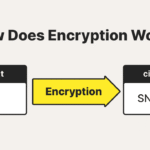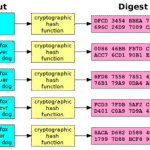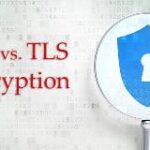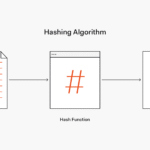In an era where digital data serves as the cornerstone of business operations, the threat of ransomware has emerged as a formidable adversary. Ransomware, a nefarious type of malicious software (malware), encrypts the victim’s files, rendering them inaccessible until a ransom is paid. As these attacks proliferate, the question arises: can encryption serve as a bulwark against this relentless tide of cyber extortion? To explore this query, one must delve into the fundamental principles of encryption, the nature of ransomware itself, and the multifaceted strategies that organizations may adopt in their fight against these sophisticated threats.
Encryption is a process that transforms readable data into a scrambled format, one that is unreadable without the appropriate decryption key. Its paramount purpose is to safeguard the confidentiality and integrity of information, rendering sensitive data impervious to unauthorized access. In the context of ransomware, the conundrum is that while encryption ostensibly protects data, it is also a primary weapon used by ransomware to incapacitate its victims. This duality presents a paradox: can encryption augment our defenses against ransomware, or does it inadvertently bolster the attackers’ arsenal?
To comprehend the role of encryption in this cybersecurity landscape, one must first appreciate the modus operandi of ransomware. Attackers typically exploit vulnerabilities within software or employ social engineering tactics to infiltrate a system. Once inside, they execute the ransomware, which stealthily encrypts files before demanding a ransom, often in cryptocurrency. This process undermines the foundational trust that individuals and organizations place in their data systems. Herein lies the crux of the matter: while encryption is vital for protecting data, ransomware exploits the very elements that render encryption effective.
One of the profound observations regarding ransomware is its reliance on human behavior and institutional practices. Many organizations still grapple with inadequate cybersecurity awareness and poor data hygiene. Regular backups, for instance, are an integral part of data management strategy. Yet, a considerable number of firms fail to implement comprehensive backup solutions or neglect to secure these backups. This oversight positions them as prime targets for ransomware attacks, as unrecoverable data becomes a bargaining chip. Interestingly, organizations may then find themselves investing in encryption not as a preventative measure but as a reactive strategy in the aftermath of a breach.
This situation uncovers a deeper fascination: the relentless pursuit of security in a landscape riddled with threats. Encryption does hold promise as part of a broader strategy to shield against ransomware. It can be utilized to protect sensitive data while being combined with other cybersecurity measures. For example, utilizing endpoint protection tools alongside encryption can create a formidable defense mechanism. Moreover, encrypting backups ensures that even if they are compromised, the data remains inaccessible without the decryption key—serving as a safeguard against the ramifications of a successful ransomware attack.
Moreover, the technological nuances of encryption itself can be leveraged in the ongoing battle against ransomware. Advanced encryption techniques, such as asymmetric encryption, provide an additional level of security. In this framework, a pair of keys—a public and a private key—are generated, enhancing the complexity of unauthorized decryption. This approach further complicates the landscape for cybercriminals, potentially deterring them from pursuing targets with robust encryption measures. However, it is critical to note that this does not render organizations immune to attack; rather, it adds layers of complexity that may prove daunting for less sophisticated adversaries.
In examining the relationship between encryption and ransomware, one cannot overlook the importance of vigilance and regular audits of cryptographic practices. Encryption is not a panacea; it is a tool that must be wielded with caution and understanding. Organizations should proactively assess their encryption protocols, ensuring that they are aligned with industry best practices while remaining adaptable to emerging threats. This dynamic approach requires continuous training and awareness campaigns to educate employees about the significance of cybersecurity measures, thus fostering a culture of vigilance across all levels of operation.
Furthermore, regulation and compliance play pivotal roles in shaping encryption strategies. Regulatory frameworks compel organizations to adopt stringent measures to protect user data. For instance, the General Data Protection Regulation (GDPR) mandates that enterprises implement effective data protection strategies, including encryption. Compliance with such regulations can catalyze a more robust stance against ransomware, reinforcing security frameworks and establishing accountability.
Ultimately, the question of whether encryption can shield us from ransomware does not yield a simple affirmative or negative response. Instead, it elucidates the intricacies of cybersecurity, where encryption is but one cog in a multifaceted machine. It serves as a foundational element of a broader strategy, emphasizing the necessity of layered defenses that encompass not only technological solutions but also organizational culture and human behavior.
In conclusion, encryption is a critical component of a holistic approach to cybersecurity. When implemented thoughtfully and in conjunction with other protective measures, it can certainly bolster an organization’s defenses against the daunting threat of ransomware. As the digital landscape continues to evolve, fostering a comprehensive understanding of encryption and its implications will be essential in navigating the complexities of this ongoing struggle against cybercrime.









Leave a Comment